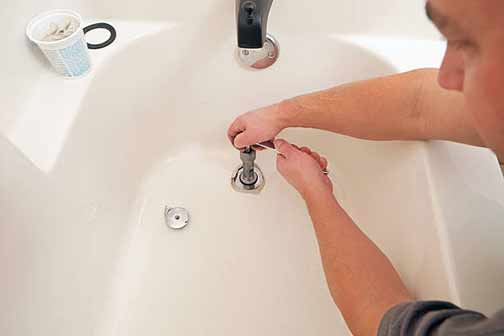
Bathtub drainage issues are a common household problem that can cause significant inconvenience. Understanding the underlying causes of slow drainage is essential for homeowners who wish to address these issues effectively. Below we aim to provide a comprehensive exploration of the various factors that contribute to slow bathtub drainage, offering insights into how to identify and resolve these problems efficiently.
The Anatomy of a Bathtub Drain: Understanding the Components
To understand the causes of slow bathtub drainage, it’s crucial to first grasp the basic anatomy of a bathtub drain. A typical bathtub drainage system consists of several components, including the drain cover, P-trap, and waste pipes. The drain cover is the visible part of the system, usually equipped with small holes to prevent large debris from entering the pipes. Beneath the drain cover lies the P-trap, a U-shaped pipe designed to hold water and prevent sewer gases from entering the home. Finally, the waste pipes connect the bathtub to the main sewer line, facilitating the flow of wastewater away from the home.
Common Causes of Slow Bathtub Drainage: Identifying the Culprits
Several factors can contribute to slow bathtub drainage, ranging from simple clogs to more complex plumbing issues. Understanding these causes is the first step in effectively addressing the problem.
Accumulation of Hair and Soap Scum: A Frequent Obstruction
One of the most frequent culprits of slow bathtub drainage is the accumulation of hair and soap scum. As we bathe, hair strands inevitably fall out and combine with soap residues, forming clumps that can obstruct the drain. Over time, these clumps grow larger, impeding the flow of water and causing slow drainage. Regular cleaning of the drain cover and the use of drain catchers can help prevent this issue.
Mineral Buildup in Pipes: The Hard Water Challenge
In areas with hard water, mineral buildup within pipes is another common cause of slow drainage. Minerals such as calcium and magnesium can accumulate inside pipes, narrowing the passageway and restricting water flow. This buildup is often exacerbated by the presence of soap scum, which can adhere to the mineral deposits. Using water softeners and descaling agents can help mitigate this problem.
Presence of Foreign Objects: Unexpected Blockages
Foreign objects accidentally dropped into the bathtub can also lead to drainage issues. Items like shampoo bottle caps, bath toys, and jewelry can become lodged in the drain, obstructing the flow of water. In such cases, removing the drain cover and manually extracting the object is often necessary to restore proper drainage.
Issues with the P-Trap: Ensuring Proper Functionality
The P-trap plays a vital role in maintaining proper drainage, but it can also be a source of problems. If the P-trap becomes clogged with debris or loses its water seal, it can cause slow drainage or even sewer gas odors. Regularly cleaning the P-trap and ensuring it remains filled with water can help prevent these issues.
Pipe Corrosion and Damage: Addressing Structural Problems
Over time, pipes can become corroded or damaged, leading to slow drainage. Corrosion can cause pipes to narrow or develop leaks, while physical damage can result in misalignment or blockages. In such cases, professional plumbing services may be required to repair or replace the affected pipes.
Improper Venting: Ensuring Airflow in Plumbing Systems
Proper venting is crucial for maintaining efficient drainage in a plumbing system. Vents allow air to enter the pipes, preventing vacuum formation and facilitating the smooth flow of water. If the venting system is blocked or improperly installed, it can lead to slow drainage and gurgling noises. Ensuring that vents are clear and correctly positioned can help resolve these issues.
Identifying the Cause of Slow Drainage: Diagnostic Techniques
Identifying the specific cause of slow bathtub drainage is essential for implementing an effective solution. Homeowners can start by performing a visual inspection of the drain cover and surrounding area for visible debris. If the cause is not immediately apparent, further investigation may be required, such as checking the P-trap or using a plumbing snake to probe deeper into the pipes.
DIY Solutions for Slow Bathtub Drainage: Practical Approaches
For minor drainage issues, several DIY solutions can be attempted before seeking professional help. Simple methods such as using a drain snake, pouring boiling water down the drain, or applying a baking soda and vinegar mixture can often dislodge minor clogs. Additionally, regular maintenance, such as cleaning the drain cover and using drain catchers, can prevent future problems.

When to Call a Professional Plumber: Recognizing Complex Issues
While many drainage issues can be resolved with DIY methods, some situations require the expertise of a professional plumber. If the cause of slow drainage is not readily identifiable, or if DIY solutions fail to improve the situation, it’s advisable to seek professional assistance. Plumbers have the experience to unclog your drains quickly and to diagnose and address more complex issues, such as any repairs needed on your sewer line or improper venting.
Preventive Measures for Maintaining Efficient Drainage: Long-Term Solutions
Preventing slow bathtub drainage is often easier than resolving it. Homeowners can adopt several preventive measures to maintain efficient drainage, such as:
- Regularly cleaning the drain cover and using drain catchers to prevent hair and debris from entering the pipes.
- Installing water softeners to reduce mineral buildup in areas with hard water.
- Being cautious about what is allowed to enter the drain, avoiding foreign objects and excessive soap residue.
- Scheduling regular plumbing inspections to identify and address potential issues before they escalate.
Conclusion: Ensuring Smooth Bathtub Drainage for a Comfortable Home
Understanding the common causes of slow bathtub drainage and implementing effective solutions is crucial for maintaining a functional and comfortable home environment. By taking proactive steps to prevent and address drainage issues, homeowners can ensure their plumbing systems operate smoothly and efficiently. Whether through DIY methods or professional assistance, addressing slow drainage promptly can prevent more significant problems and enhance the overall quality of life.